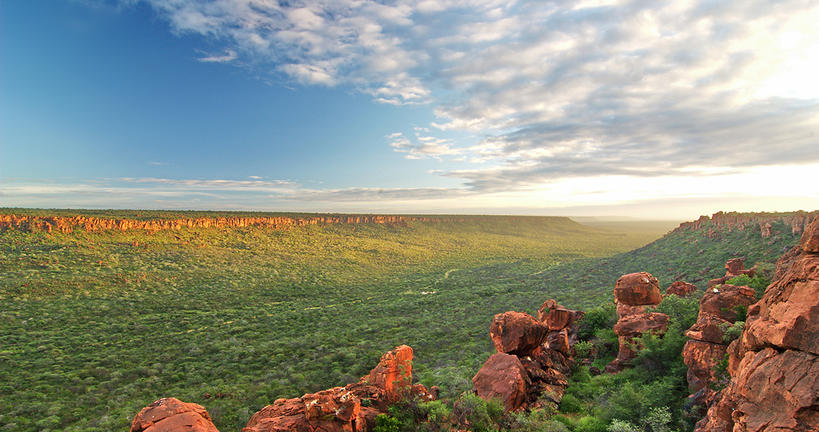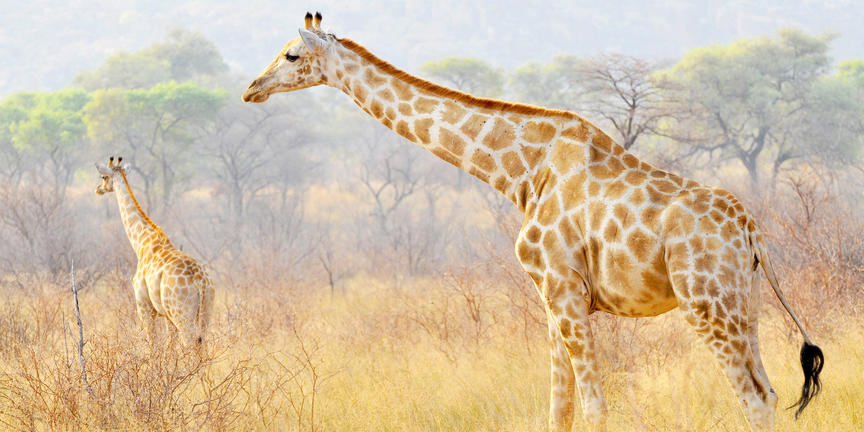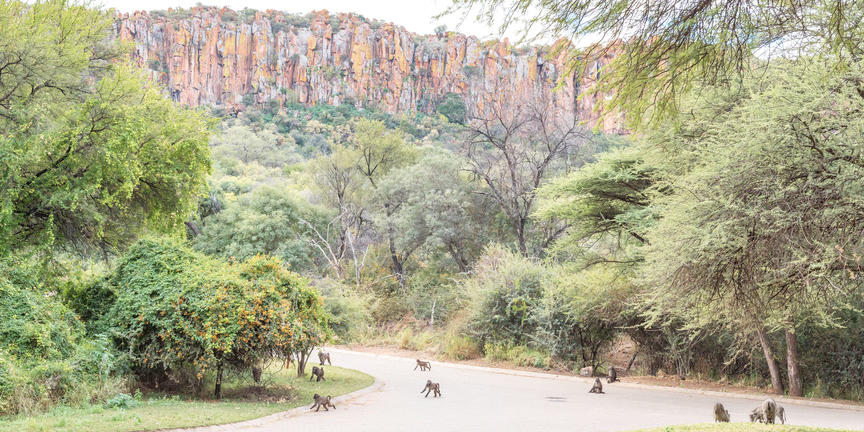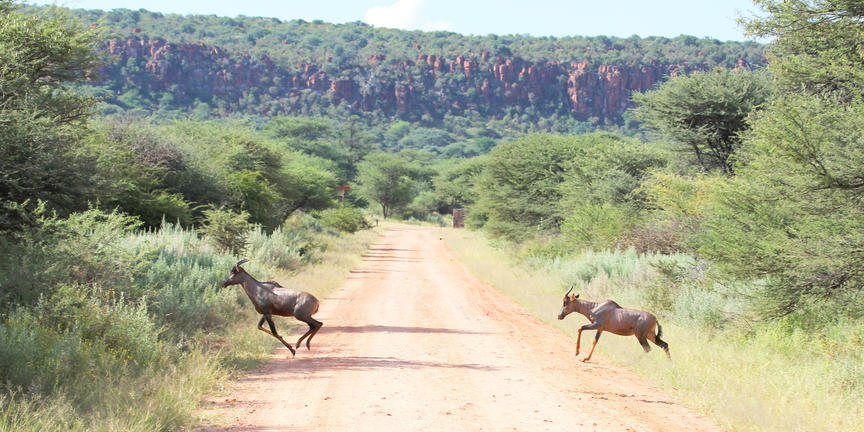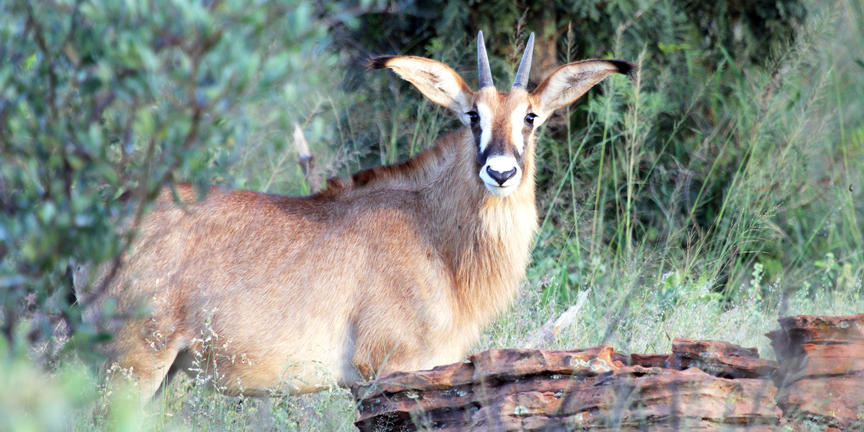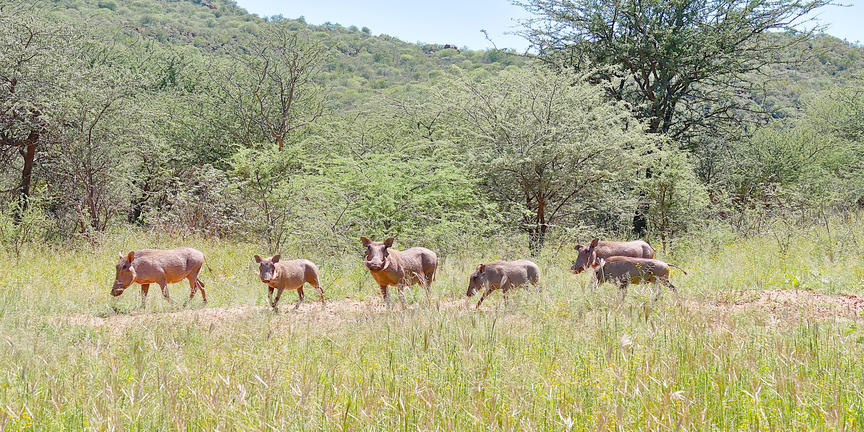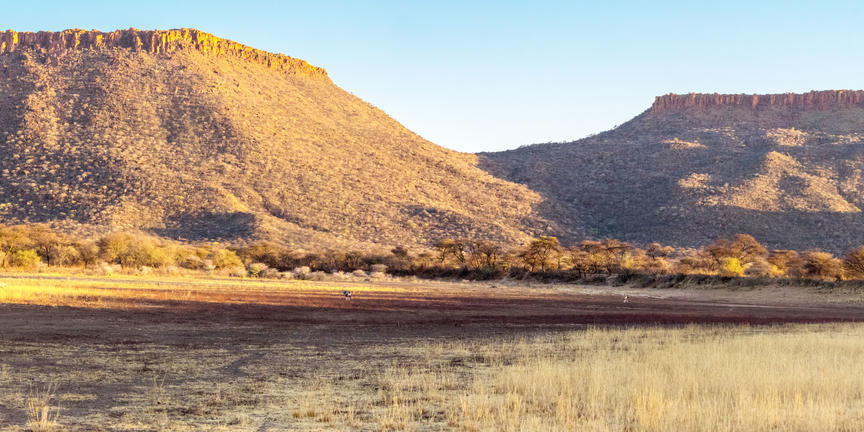The Waterberg Plateau, located east of Otjiwarongo, rises about 200 meters above the surrounding plains. This table mountain massif, 20 kilometers wide and 50 kilometers long, is composed of porous sandstone through which precipitation seeps into the permeable rock and encounters an impermeable layer of clay beneath.
While the plateau itself is relatively dry, there is abundant surface water and strong perennial springs at the base of the mountain. As a result, the vegetation here is comparatively lush, green, and highly diverse. Visitors can observe wild fig trees, flame lilies, and coral trees, among others.
Since 1972, the approximately 400-square-kilometer Waterberg area has been under nature conservation, and endangered species have been reintroduced. These include both black and white rhinos, sable and roan antelopes, as well as plains zebras.
The Waterberg Plateau Park offers excellent opportunities for hiking and relaxation. It features an excellent rest camp with a restaurant, beautiful and affordable holiday cottages, a swimming pool, and a campsite.
The Waterberg region also holds historical significance as it was traditionally inhabited by the Herero people. During the German-Herero conflict in August 1904, about 40,000 Herero men, women, and children, under the leadership of Samuel Maharero, were trapped by 1,600 German colonial soldiers at Waterberg and decisively defeated in a dramatic battle. Only a few Herero managed to escape through the Kalahari Desert to Botswana. Today, a military cemetery bears witness to the tragic events of that time.
